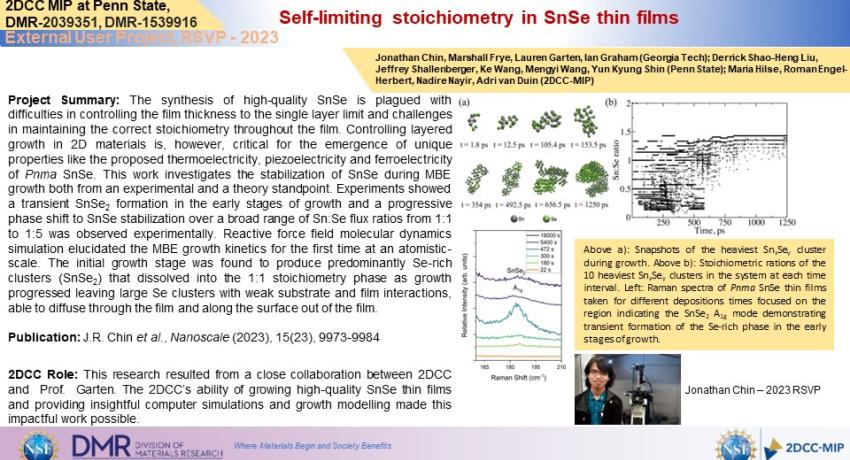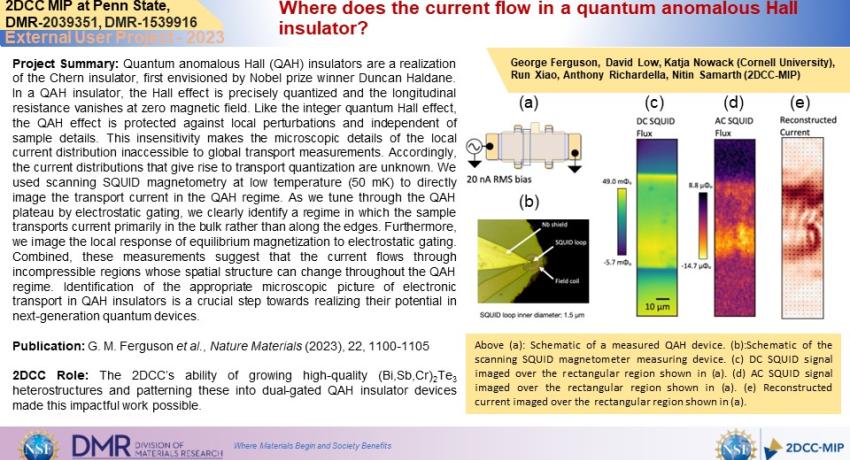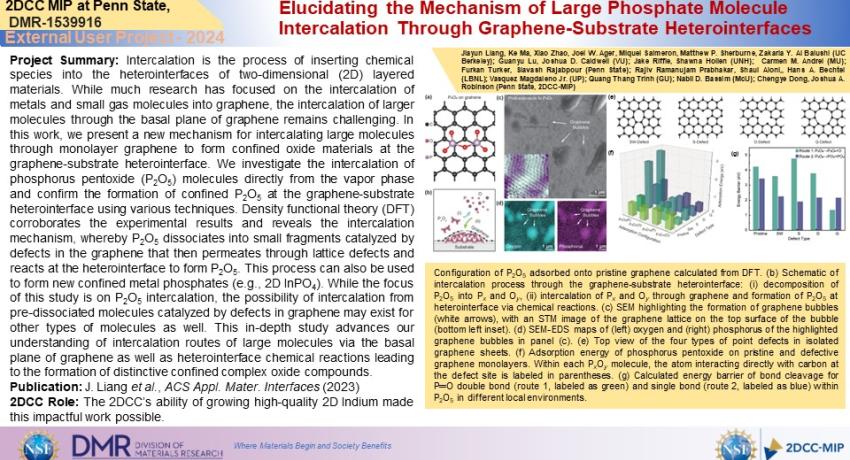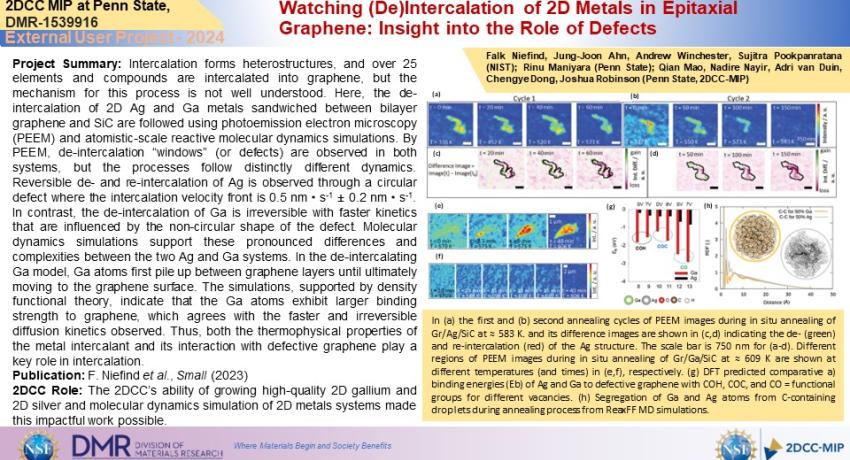Self-limiting stoichiometry in SnSe thin films
The synthesis of high-quality SnSe is plagued with difficulties in controlling the film thickness to the single layer limit and challenges in maintaining the correct stoichiometry throughout the film. Controlling layered growth in 2D materials is, however, critical for the emergence of unique properties like the proposed thermoelectricity, piezoelectricity, and ferroelectricity of Pnma SnSe. This work investigates the stabilization of SnSe during MBE growth both from an experimental and a theory standpoint.








